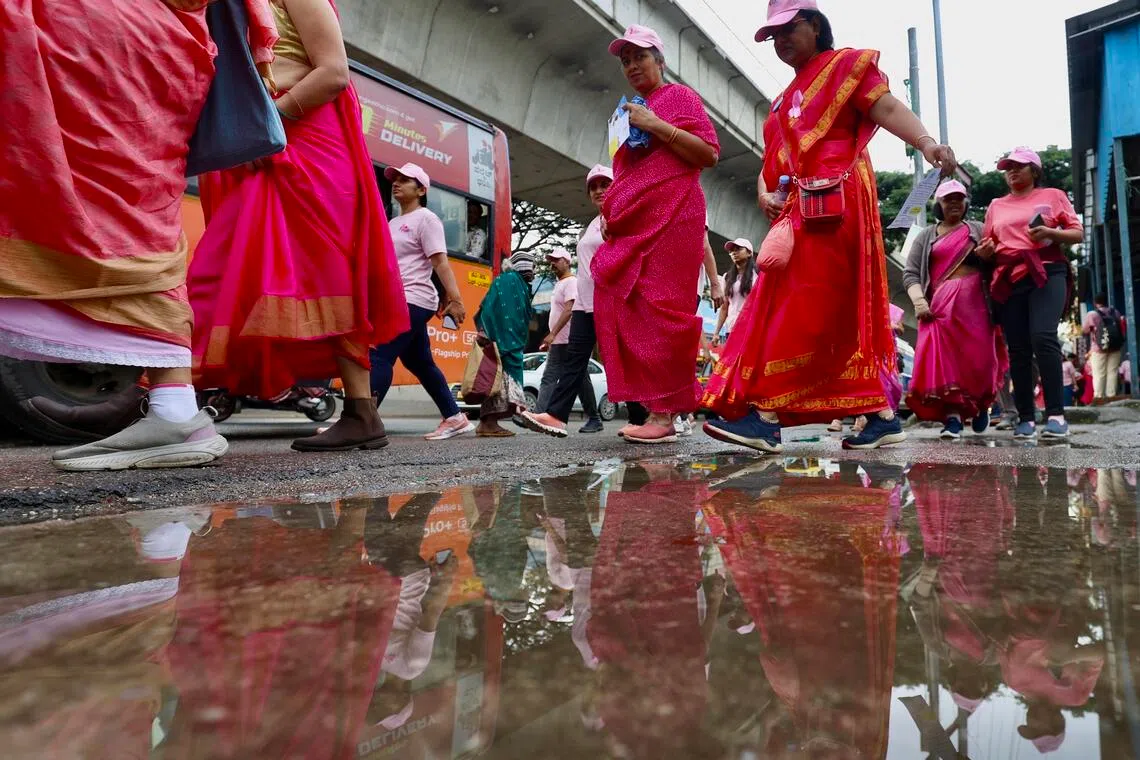12 paid menstrual leave days in Karnataka cover govt and private sectors
Sign up now: Get ST's newsletters delivered to your inbox

The Menstrual Leave Policy 2025 will apply not only to government employees but also to those working in private organisations across various sectors.
PHOTO: EPA
Follow topic:
KARNATAKA – In a major move towards gender-sensitive workplace policies, the Siddaramaiah-led Karnataka government in India has approved a new initiative that allows women to take one paid day off every month during their menstrual cycle.
The Menstrual Leave Policy 2025 will apply not only to government employees but also to those working in private organisations across various sectors, including information technology, corporate offices and the garment industry.
Announcing the decision on Oct 9, Chief Minister Siddaramaiah said the policy reflects the state’s commitment to ensuring dignity and well-being in the workplace.
“Through the Menstrual Leave Policy 2025, women employees across Karnataka will now receive one paid leave day every month – a step towards a more humane, understanding and inclusive workspace,” the Chief Minister shared in a post on social media platform X.
The government stated that the new policy recognises women’s health as a fundamental right and aims to create an environment where they can take care of themselves without hesitation or stigma.
An official statement said: “The Karnataka government recognises the importance of health as a fundamental aspect of women’s rights and workspace well-being. The menstrual policy is a step towards creating an environment where women can take care of their health without stigma.”
With this decision, Karnataka becomes one of the few Indian states to formally introduce menstrual leave for women in both the public and private sectors.
The move follows similar efforts in Kerala. The state introduced menstrual leave for female students earlier in 2025. Kerala Chief Minister Pinarayi Vijayan had said at the time that the initiative reflected the government’s commitment to building a gender-just society.
Bihar and Odisha states already have menstrual leave policies. But those benefits are currently limited to just government employees.
Karnataka’s policy has received praise for being inclusive and progressive. But some questions persist about how the government will implement it. The confusion is particularly in the unorganised sector where monitoring workplace rights can be challenging.
The unorganised sector includes workers in various domains like small shops, daily wage jobs, construction sites, street vendors and domestic help. Simply speaking, these are the jobs that are not officially registered. The workers often do not have formal contracts or workplace benefits.
Workplaces in the unorganised sector, unlike the government offices and the private sector, may not have clear human resources systems or leave policies. Women in these jobs often face pressure to work even when they are unwell. In many cases, taking time off can mean losing pay or even risking their job.
This makes it uncertain whether the 12 paid menstrual leave days promised by the government will really reach them. THE STATESMAN/ASIA NEWS NETWORK

